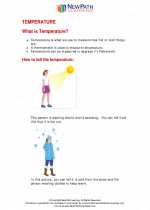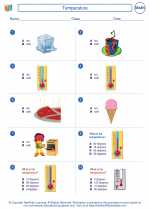Angles
An angle is a measure of rotation between two rays or line segments that share a common endpoint. Angles are typically measured in degrees or radians.
Types of Angles
There are several types of angles:
- Acute angle: An angle that measures less than 90 degrees.
- Right angle: An angle that measures exactly 90 degrees.
- Obtuse angle: An angle that measures more than 90 degrees but less than 180 degrees.
- Straight angle: An angle that measures exactly 180 degrees.
- Reflex angle: An angle that measures more than 180 degrees but less than 360 degrees.
Angle Measurement
To measure an angle, you can use a protractor. Place the center of the protractor over the vertex of the angle and align the baseline of the protractor with one of the rays. Then, read the measurement where the other ray intersects the protractor's scale.
Angles in Shapes
Angles are important in understanding the properties of shapes. For example:
- In a triangle, the sum of the interior angles is always 180 degrees.
- In a quadrilateral, the sum of the interior angles is always 360 degrees.
Angle Relationships
There are several important angle relationships, including:
- Vertical angles: Two angles are vertical if their sides form two pairs of opposite rays.
- Adjacent angles: Two angles are adjacent if they share a common vertex and side, but do not overlap.
- Complementary angles: Two angles are complementary if the sum of their measures is 90 degrees.
- Supplementary angles: Two angles are supplementary if the sum of their measures is 180 degrees.
Practice Problems
Now that you've learned about angles, it's time to practice! Here are some problems to test your understanding:
- Find the measure of each angle:
- Angle 1: 45 degrees
- Angle 2: 120 degrees
- Angle 3: 90 degrees
- Identify the type of each angle:
- Angle A: 30 degrees (Acute angle)
- Angle B: 105 degrees (Obtuse angle)
- Angle C: 180 degrees (Straight angle)
Good luck with your angle practice!
.◂Math Worksheets and Study Guides First Grade. Temperature
Study Guide Temperature
Temperature  Worksheet/Answer key
Worksheet/Answer key Temperature
Temperature  Worksheet/Answer key
Worksheet/Answer key Temperature
Temperature  Worksheet/Answer key
Worksheet/Answer key Temperature
Temperature 

 Worksheet/Answer key
Worksheet/Answer key
 Worksheet/Answer key
Worksheet/Answer key
 Worksheet/Answer key
Worksheet/Answer key

The resources above cover the following skills:
Measurement (NCTM)
Understand measurable attributes of objects and the units, systems, and processes of measurement.
Select an appropriate unit and tool for the attribute being measured.
Apply appropriate techniques, tools, and formulas to determine measurements.
Use tools to measure.